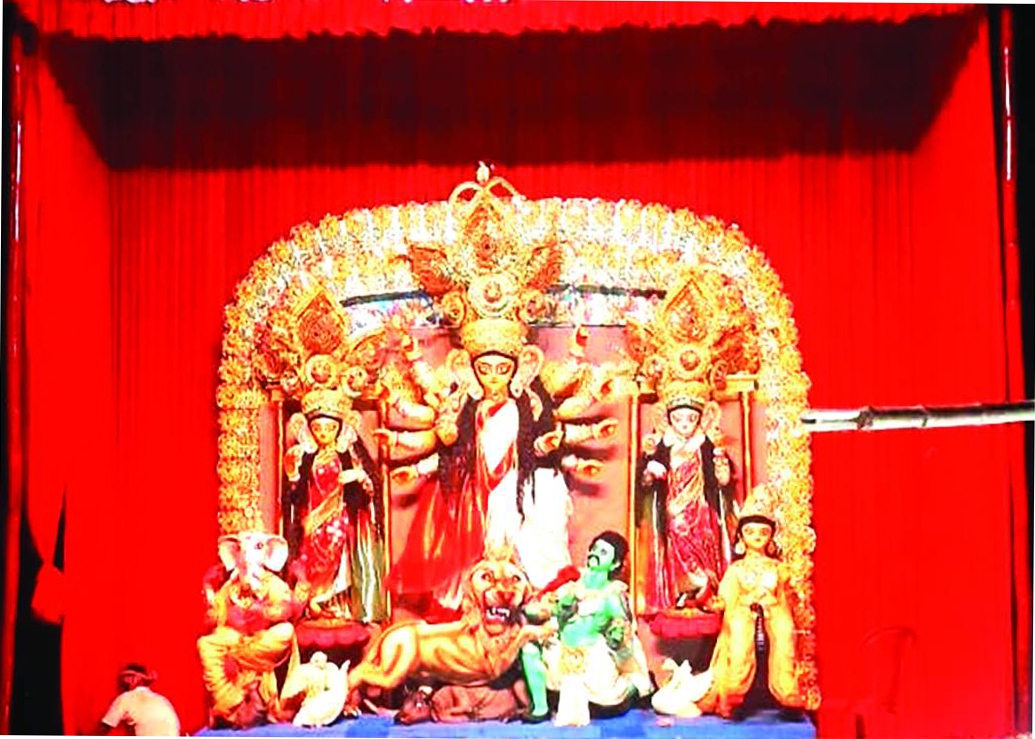New bus route flagged off, existing one extended to connect NW areas of city
To boost the connectivity of areas lying in the parts of North West Delhi, the city government on Monday inaugurated a new bus route while extending an existing one.
Durga Pujo is that time of the year when the city returns to itself.

Netaji Sangha Barisha Behala ( Photo :Shaoli Pramanik)
At the end of Monsoon, the city scatters itself before the autumnal colours of Ashwin. A season that waits patiently before running amok in the city’s lanes, by-lanes and tree-lined avenues.
The season rushes into the eyes of most Calcuttans, like a current of blood. The streets ebb with the languorous smell of shiuli, kash phools glimmer on highways, most localities start constructing their pandals and office goers have had already applied for their five-day pujo leave.
These whiffs cannot be explained, but can only be grasped by emotion and unreason. For, Durga Pujo is that time of the year when the city returns to itself.
When a Calcuttan speaks of Durga Pujo, he locates himself in the deep shadows of a 400-year-old practice. This five-day festival celebrates the triumph of good over evil or the Victory of goddess Durga over Mahishasura. The festival is also a celebration of harvest and therefore epitomises the goddess as the motherly force who powers life and creation. The five days of the festival are known as Shashthi, Saptami,
Advertisement
Ashtami Navami and Dashami. But what transcends even years of history and tradition, is how this festival lives on the limits of imagination, beauty, memory, camaraderie and a spectacular display of craftsmanship and artistry. A festival that grows older and younger with time like the River Ganges.
In the face of an otherwise indifferent cityscape, Durga Pujo emerges like the soft notations of a beloved song long forgotten. A coming together of the fleeting, fragile, buoyant and beautiful that becomes the very tongue with which Calcuttans go on to describe the alphabets of their being and unbeing. Such is the impact of Durga Puja.
A time when people from all walks of life enter through the gates of countless pandals but leave their caste, class and religious boundaries at the gates. What pervades the air is the boundless spirit of inclusion, festivity and revelry. An emotion that has reigned for decades without control.
Even in a post-Covid world, capped by the mask and armed by the vaccine, the oneness of Durga Pujo has taught us to love the festival for what it no longer is. After 2 years of being corralled by the virus, the city has never faltered to find itself even in the cracks and crevices of limited celebrations.
As the dhak beats start rolling, and as the fires of arati start raging, the Pujo rituals gain momentum. But what underlines each day of the festivities is its fast approaching end. Even in 2021, when Calcuttans are caught between protocol and ‘parikrama’, they still have their heart pounding at their throats way before the arrival of Ma Durga.
On Bijaya Dashami, the hesitant yellow of the setting sun swells up the city. The silence that stirs the empty pandals is like an empty parenthesis. The lashing of the idols into to the water, ring violently in the hearts of devotees. But what remains is memory mixed with delirium and fragrance of days past. And every Calcuttan finds himself in the never escaping radius of these whiffs and fragrances. So, in many ways, the essence of Durga Pujo lives on like a song, a smell, a taste that remembers more than we do and continues to burn brighter than we do.
Advertisement